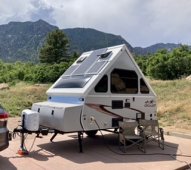memilanuk
New Member
- Joined
- Apr 21, 2021
- Messages
- 125
Hello all,
I was recently checking out a YT vid w/ accompanying blog post, where they had separate MPPT charge controllers, one for each solar panel on the roof.
The reasoning was presented as being to prevent shading of any one array from affecting any of the others. Later I wondered if it would also be to add some redundancy (no single point of failure) and/or in some instances whether multiple smaller controllers might be cheaper than a single larger controller (within the same brand/line, in this case Victron). It does seem like there would be some additional complexity in terms of the number of wires having to be ran in from the roof to the charge controllers, etc.
I'm still very new to the whole solar thing, so this was an interesting new idea to me. No dog in the fight one way or the other, as the saying goes. I'm curious, though, how much this gets used in actual practice, and what other pros/cons might be?
Thanks!
I was recently checking out a YT vid w/ accompanying blog post, where they had separate MPPT charge controllers, one for each solar panel on the roof.
The reasoning was presented as being to prevent shading of any one array from affecting any of the others. Later I wondered if it would also be to add some redundancy (no single point of failure) and/or in some instances whether multiple smaller controllers might be cheaper than a single larger controller (within the same brand/line, in this case Victron). It does seem like there would be some additional complexity in terms of the number of wires having to be ran in from the roof to the charge controllers, etc.
I'm still very new to the whole solar thing, so this was an interesting new idea to me. No dog in the fight one way or the other, as the saying goes. I'm curious, though, how much this gets used in actual practice, and what other pros/cons might be?
Thanks!




